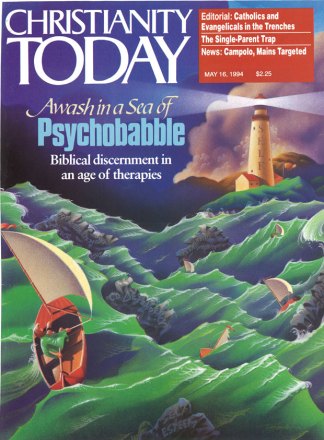Barney the Dinosaur’s introduction to the world in 1988 went largely unheralded. But over the last few years, the purple reptile with the permanent smile has made countless pint-sized friends around the country.
A growing number of church leaders, particularly those who focus on the end times, are decrying Barney as a herald of the New Age movement and a potential hazard to the spiritual health of children. In doing so, they are following the lead of Barney’s most vocal critic, Joseph R. Chambers, senior minister of Paw Creek Ministries in North Carolina.
Barney, for the uninitiated, is known mainly for his simple songs and speeches, intended to promote positive self-image and concern for others. To a lesser extent, he teaches safety precautions and promotes environmental awareness.
A Ku Klux Klan spokesperson has criticized Barney because the man inside the suit is African-American. But Mike Doll, director of media relations for the Lyons Group, the producer of the show, says, “Barney is not black, Barney is not white. Barney is purple. He is a dinosaur who loves children and teaches them the skills they need to enter school.”
Chambers, who has appeared on more than 100 radio and television talk shows, is concerned in part about Barney’s politics, labeling him a “political liberal—Bill Clinton style.” But his main message focuses on Barney’s use of imaging techniques.
On a recent Philadelphia television talk show, Chambers asserted, “Using the imagination to create magically … is condemned in Scripture as being in the realm of the occult.”
Doll says, “Reverend Chambers is entitled to his opinion. But Barney does not get involved in any kind of religious instruction.”
Child psychologist Michele Novotni of Life Counseling Services in Paoli, Pennsylvania, has analyzed several Barney programs. She concludes that Chambers makes unjustified logical leaps in reaching his conclusions. Chambers, for example, states in a pamphlet on Barney that hugging trees “is a motto and idea of the most radical Ecologist New Agers in this nation.” But according to Novotni, teaching children who are lost in the woods to hug a tree is standard advice to get them to stay in one place. Novotni maintains that Barney is “95 percent wholesome.”
But not all of Barney’s instruction escapes Novotni’s disapproval. Novotni disagrees with Barney’s teaching that each child’s family is “right” for him or her. She said, “A child who is abused or neglected might conclude from this message that their situation is normal and acceptable.”
She is concerned about reliance on Barney rather than on parents. Yet even Barney’s weaknesses can be addressed, says Novotni, if parents use them as “teachable moments.”










